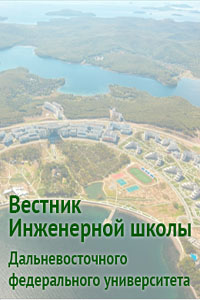Influence of the channel roughness factor change on the maximal design levels of a small watercourse in a given river cross (Nelma river example)
Keywords:
watercourse, river, roughness, riverbed, factor, design level, resistanceAbstract
The watercourse resistance to the flow is usually expressed by a roughness coefficient, and significantly affects on the main hydraulic characteristics of a water object at its flow capacity evaluation. Any small watercourse has own features with sufficiently quick response to changes occurring over the entire catchment area, therefore it requires a separate study. In this article. The authors try to calculate the value of the roughness factor in high water according to observations of the Nelma river. It was found that the reference roughness factor leads to overestimated value of the maximal water level. The roughness factor is decreased with rise of Froude number according to calculations. The obtained results can be used in the development and correction of methods for determining the main design hydrological characteristics of watercourses determined for the safe use of the adjacent territories.
Downloads
Published
Issue
Section
License
Copyright (c) 2022 Far Eastern Federal Univercity: School of Engineering Bulletin

This work is licensed under a Creative Commons Attribution 4.0 International License.

